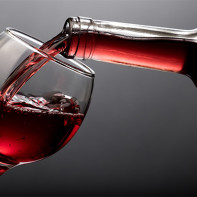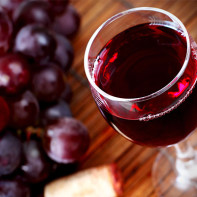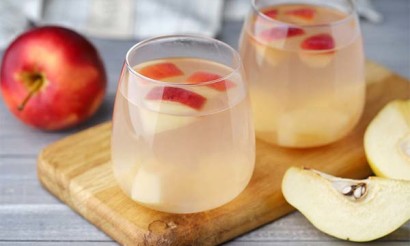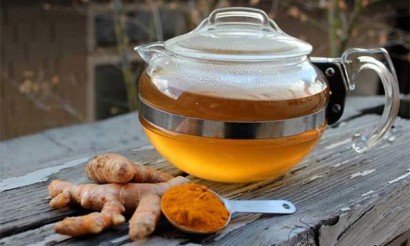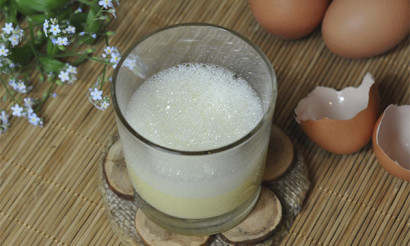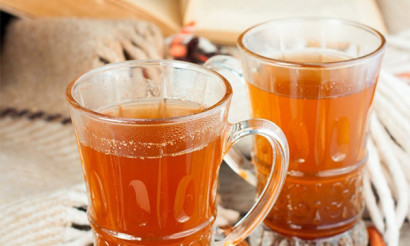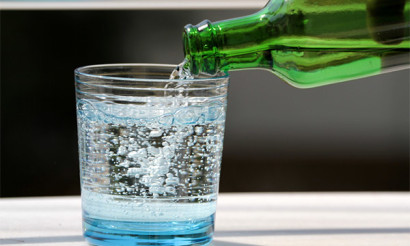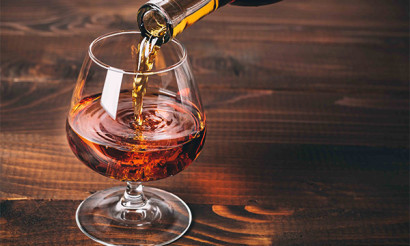Red wine: useful properties and contraindications
Red wine is one of the oldest drinks in human history. In total in the world there are more than 4.5 thousand of its varieties. And all of them contain tannins responsible for its spicy aroma and resveratrol, which provides its medicinal properties.
- What is the difference between red wine and white wine
- Which wine is healthier, white or red?
- Composition and calories
- What is red wine good for?
- For Women
- For men
- For Pregnancy
- For breastfeeding
- For children
- For Slimming
- Red wine in medicine
- Diabetes mellitus
- For pancreatitis
- For gastritis
- For bowel
- For gout
- For colitis
- For the liver
- For hemorrhoids
- For cholecystitis
- Colds
- Does red wine increase or decrease my blood pressure?
- Red wine based folk medicine recipes
- Red Wine in Cosmetology
- For Face
- For Hair
- Harm and Contraindications
- Red wine allergy symptoms
- How to choose and store wine
- How to test for naturalness
- How to Drink Red Wine correctly
- Can I Drink Every Day?
- Can I Drink on an empty stomach and at night?
- Can I Drink Red Wine During Lent?
- What is an appetizer for red wine?
- Can I Mix White and Red Wine?
- How to Get Red Wine Stain Remover
- How to make red wine mulled wine
- Popular Red Wines
- Interesting facts about red wine
What is the difference between red wine and white wine
Many people think that the answer to this question is obvious. The main difference is the color, or in a broader sense, the hue of the raw material from which the drink is made. But in practice this is not the case, although red wine most often needs red and black grapes, but how exactly they are used also plays a role. In fact, white wine is often made from red-peeled varieties like Pinot gris. In addition to Chardonnay, Champagne is made with such officially approved varieties as Pinot Meunier and Pinot Noir, which are black varieties.
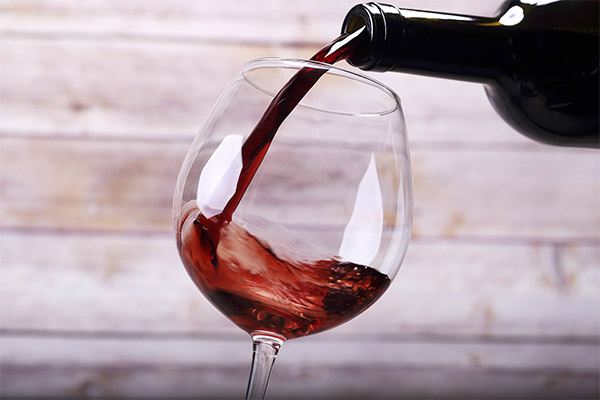
So in practice red wine differs from white wine in particular technological process, i.e. the method of converting berries into a noble beverage. The process of making red wine is much more complicated. The grape must obtained in the usual way does not have a saturated hue, because the pigment is contained in the skin. Therefore, for the production of red wine, the flesh of the grapes is processed together with the skins to give the beverage the desired color. And the pressing is done after fermentation.
Which wine is healthier, white or red?
There is no definite answer to this question. Each kind has its own advantages. But in general it is believed that since the production process of red wine uses grape skins, rich in resveratrol and tannins, this drink is of great value for the cardiovascular system and metabolism.
Composition and calories
The energy value of different varieties of the drink can vary significantly. On average, it does not exceed 121-125 kcal per 100 ml. At the same time, the content of carbohydrates is 4 g per this volume.
There are many useful elements in red wine. Suffice it to note that 100 ml of the drink contains 10% of the daily requirement of manganese, 5% of the daily requirement of potassium and 4% of magnesium. In addition to these elements, it contains the already mentioned tannins, resveratrol, B vitamins and even iron and phosphorus.
What is useful for red wine
For women
Many women are afraid to drink alcoholic beverages, because it is believed that it increases the risk of cancer. However, studies have proven that this is not the case with red wine. On the contrary, the special substances it contains reduce estrogen levels and increase the amount of testosterone in menopausal women. This significantly reduces the risk of malignant tumors of the breast.
And, of course, women will be interested to know that red wine, used as an external remedy, has gained popularity in cosmetology. This drink improves skin tone, helps to get rid of minor cosmetic imperfections, and slows down the appearance of wrinkles. But not all varieties of the drink are equally useful. For example, sweet and semi-sweet wines are recommended for dry skin, which will nourish it.
For men
An important property of red wine is that it protects against deposits of bad cholesterol, which can form on the walls of blood vessels. This problem is most often faced with the representatives of the stronger sex, whose blood has a large amount of low density lipoproteins. Under the influence of substances in the drink, high density lipoproteins are produced, which are the basis of "good" cholesterol. This reduces the risk of cardiovascular disease and prevents the formation of atherosclerotic plaques. But all of this only applies to drinking wine in scientifically proven amounts.
Many scientific studies also prove that resveratrol and other components of red wine have a positive effect on cognitive abilities and memory. Of course, this drink can not be considered an independent cure for Alzheimer's disease, but as part of complex therapy, it can be beneficial even in this case.
Pregnancy
Although WHO experts believe that any beverage containing ethanol, including red wine, is prohibited during pregnancy, but many national health organizations have a softer approach to this issue. In particular, they cite scientific studies that prove that natural red wine increases hemoglobin levels. This is very good for moms-to-be. Some studies have even shown that it is good for the development of the baby.
But whatever the future mother decides, she should not drink wine until the 17th week of pregnancy. Yes, and in the second and third trimester, you can not drink more than 100 ml in one day.
When breastfeeding
In many cultures, including the Slavs, it is believed that red wine is necessary for lactation because it increases the amount of breast milk. In fact, this is not entirely true. The amount of breast milk depends on two hormones, oxytocin and prolactin. In this case, under the influence of red wine, prolactin production is doubled, but milk is not released in increased quantities because this drink reduces the production of oxytocin. So breastfeeding is practically unaffected by red wine.
However, this does not mean that a breastfeeding mother should give it up completely if she is to, for example, have a feast. You can allow yourself up to 100 ml of red wine, but you should feed the baby just before you drink it. Then by the next feeding alcohol will have time to leave the body, including from the milk.
For Children
Many people believe that children should not be given alcoholic beverages. Although there are studies by Boston medical experts that early wine drinking under parental supervision significantly reduces the risk of developing alcohol dependence in the future.
Currently, it is up to each family to decide whether to introduce a child to a culture of alcoholic beverages. However, in some cases red varieties for children are used for therapeutic purposes. For example, literally 2 tbsp. of wine a day is considered an excellent remedy for anemia. This drink is also used to gargle the throat in case of sore throat. You just need to be very careful to make sure that the child does not drink too much wine.
For weight loss
Recent scientific studies prove that red wine promotes slimness. Quercetin, resveratrol, and other elements it contains help boost the metabolism and slow the growth of fat cells. Of course, this only applies to dry wine, which contains minimal carbohydrates. And in any case, you can not consider it a panacea and the only means to lose weight, abandoning the diet and exercise.
Red wine in medicine
Now official medicine looks at the red wine more favorably. After all, there are constantly appearing data from scientific studies, confirming the therapeutic properties of the drink in cardiovascular pathologies, problems with the central nervous system, even with dental caries. Below will be considered options for its use with various diseases.
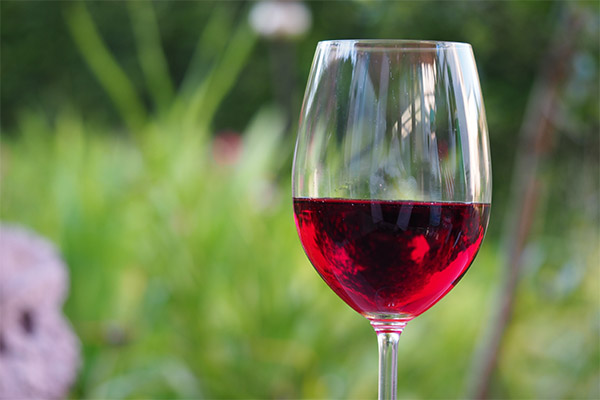
When diabetes mellitus
Analysis of the chemical composition of the drink shows that red wine has a high concentration of substances such as polyphenols. It is they who allow to regulate the blood sugar level. Studies have shown that drinking this drink (within medical limits) can slow the development of type 2 diabetes. The daily norm in this case is one glass of Cabernet or Merlot for a woman and twice that for a man. The therapeutic effect of the drink is explained by the fact that the amount of polyphenols in one glass of the drink corresponds to the content of substances in a daily dose of commonly used pharmaceutical anti-diabetic drugs.
However, it should be noted that this drink has no effect on type 1 diabetes.
Important: The glycemic index of red dry wine - 36 units, red semi-dry - 44.
With pancreatitis
The usefulness of red wine in pancreatitis remains a controversial issue. On the one hand, there are studies that show that this drink contains a lot of antioxidants with anti-inflammatory effects. On the other hand, there are cases when even in small doses alcohol caused unpleasant consequences. So red wine with pancreatitis can be drunk only in very limited quantities, no more than 200 grams per month.
With gastritis
In this disease it is allowed to drink only dry red wine. However, the recommended dose is 100-200 grams of wine once a month and not more often. Antioxidants contained in the drink help normalize the state of the mucous membrane of the stomach, but if the dosage is higher, it can lead to unpleasant consequences.
For the gut
For a long time, wine was considered harmful to the organs of the gastrointestinal tract. However, it is now proven that red wine in therapeutic amounts (not more than a glass daily) has a good effect on the intestines and digestive processes, even without the need to follow a diet.
Participants in the experiment who regularly drank wine had a better composition of the intestinal microflora than those who did not take alcohol at all. C-reactive protein levels, which indicate inflammatory processes, were also reduced. However, this situation was observed even when drinking weak or diluted wine, indicating that only the level of polyphenols, not the ethanol content, is responsible for the beneficial effects on the intestines.
Gout
This disease is associated with a disturbance of the purine metabolism. Hard alcohol only makes the situation worse. But dry red wine strengthens the natural defense of the body and increases the level of hemoglobin. So doctors allow the use of this drink for gout, but not more than twice a week and not more than a glass. In this case, neither before nor after this drink should be consumed fatty meat dishes.
In colitis.
This disease is inflammatory, but the causes of its development have not been established. Some experts believe that red wine, which contains antioxidants, has excellent anti-inflammatory properties. They recommend to drink it as a medicine 2 tbsp. three times a day for half an hour before meals. The duration of such a course should be no more than a month. However, this method of treatment has its detractors.
For the liver
Many people believe that for the liver, alcohol is harmful in any form. But in fact this is not true. Studies have shown that very often it is the liver that suffers from non-alcoholic steatohepatitis associated with metabolic disorders. Overeating and obesity lead to this disease. But dry red wine just fights with non-alcoholic steatohepatitis. However, while American researchers believe that it allows you to drink up to 100 ml of drink per day, Russian physicians believe that the optimal dose does not exceed 30 ml.
In hemorrhoids
In this disease, you should not drink strong alcoholic beverages, because the breakdown products of alcohol will traumatize the mucous membranes. For the same reason, you should not drink sparkling wines. But this is not the case with dry red wine. You can drink 1 glass of red wine a week, but only during the remission period.
Cholecystitis.
In this disease it is necessary to lower the level of cholesterol and normalize the hepatobiliary system (in particular the liver). An excellent remedy for this - dry red wine, but no more than one glass once every two days.
For colds
Red wine boosts the immune system and helps to get rid of colds, bring down a high fever and even beat the virus. It is believed that the drink is useful even for bronchitis, flu and pneumonia, the more so it helps with a trivial runny nose. However, this applies only to heated red wine with spices: these are such drinks as uzvar, punch or mulled wine, the recipe for which will be discussed below.
Does red wine increase or decrease blood pressure?
It is known that almost any alcohol first helps to dilate the blood vessels and then causes spasms. This is also true for sweet red wines. However, dry red wine works a little differently if you dilute it with a table mineral water without gas by half. Then it dilates blood vessels, helps to relieve cramps and lower blood pressure.
Red wine based folk medicine recipes
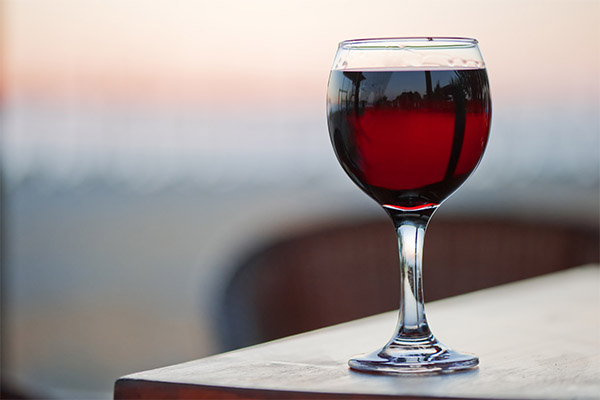
- For the treatment and prevention of colds and flu, it is recommended to use an effective remedy. For this purpose, dry wine, honey, aloe juice obtained from the leaves of the plant are mixed in equal quantities (you need to take the lower ones, they have more active components). This mixture is infused for five days and then taken before eating three times a day with 1 tsp.
- When bronchitis can also be used cagorne instead of dry wine. For example, you can prepare a therapeutic tincture based on 0.5 liters of cagorne, 250 g of fresh aloe leaves, the same amount of walnut kernels, 5 lemons, 800-900 grams of honey. It is not necessary to peel lemons, but the pips should be removed. These fruits with aloe and nuts are passed through a meat grinder or blender, then thoroughly rubbed with honey and cahogor. The remedy is stored in a glass container in a dry and dark place. When the disease is recommended to take 1 tbsp. three times daily before a meal (adults) or 1 tsp. - children under 12 years. Some variations of this recipe suggest adding as much fat to the mixture as honey (for example, melted goose fat).
- Red wine will help to relieve swelling. For this purpose, the following remedy is prepared. Take about 20 sprigs of fresh parsley greens, 100-150 g of flower honey, 1 l of red dry wine. Parsley must first be poured in vinegar, boil, then add honey, wine and once again bring to a boil and keep on low heat for 5 minutes. Then cool the remedy, strain, pour into bottles. Take it three times a day for 30 ml after a meal.
Red wine in cosmetology
This drink is widely used not only in spas and in factory cosmetic masks, creams and mousses, but also in simple home remedies, which can easily be tried using only improvised products.
For the face
Red wine is considered an excellent remedy for maintaining youthful skin. On its basis make a variety of masks, the ingredients of which are selected according to the specific situation. For example:
- Universal mask for all skin types: 2 tbsp of dry red wine is mixed with one raw protein and evenly applied to the skin. The mask is washed off after 10 minutes and the face is wiped with an ice cube.
- Mask for mature skin. A separate infusion is prepared: 2 tablespoons of dried rose petals for 100 ml of strong natural red wine. Infuse it in the fridge for 5 days. Then use as needed. For example, 1 tbsp. of this remedy can be added to a traditional mask of mashed boiled potatoes. The composition is applied to the skin for 15 minutes, then rinse with cool water.
- Mask against acne and irritated skin. Take a cucumber, grate it on a fine grater, mix it with raw protein of a chicken egg, add 1 tbsp. red wine and 1 tsp. honey. All these ingredients are mixed, applied to the skin and then washed off with cool water in 10-15 minutes.
- Red wine is added to a classic rejuvenating mask based on oatmeal (2 tablespoons of ground flakes, the same amount of freshly squeezed orange juice and wine). The mask is left on the face for 10-15 minutes, then the composition is washed with room temperature water.
For hair
Red wine is also useful for hair. On its basis make a variety of masks. For example:
- Strengthening mask. Take 100 ml of red wine and 50 ml of burdock oil, mix it, heat it in a water bath, add an egg yolk (but only when the mixture cools down a little so that the yolk does not have time to curdle). Mask applied to wet hair for 45 minutes, then wash out with regular shampoo.
- Mask from seborrhea. Mix 1 tbsp. each of liquid sour cream and honey and add 50 ml of red wine and mix again. Apply the remedy to dry hair, leave it for half an hour, then wash it off with shampoo.
- Nourishing mask for any type of hair. Take 70 ml of dry red wine, add 3 tbsp of high-fat cream, 2 tsp of burdock or almond oil. All the ingredients are mixed, heated in a water bath and applied to dry hair for an hour, then the product is washed off with shampoo.
But just keep in mind that masks based on red wine are not suitable for blondes, because the compositions need to be kept on the hair long enough, and the pigment has time to be absorbed.
Harms and contraindications
In large quantities, like any other alcohol, red wine can cause severe poisoning.
Red wine is contraindicated for people with alcoholic cirrhosis of the liver, with peptic ulcer disease of the stomach and intestines. Also, it can not be consumed with coronary heart disease and in the presence of allergic reactions to grapes or other components.
Symptoms of allergies to red wine
Because of the high concentration of enzymes and the addition of herbs and fruits, red wine can cause allergies. In principle, the symptoms will be the same as for any other allergic reaction, including urticaria (red spots on the skin), red eyes, dry cough, runny nose with clear discharge, and a severe headache. But in this case, signs such as stomach pain, nausea and vomiting, digestive disorders and even tachycardia may also be added. In any case, the allergic person should be given antihistamines, and if there are symptoms of difficulty breathing - call an ambulance.
How to choose and store wine
It is better to choose high-quality red wine not in supermarkets, but in specialized stores, where there is much less risk of running into a fake. Although traditionally the best wines are considered to be French, Italian or Spanish, many experts advise to pay attention to the products of other wine-making regions from South America or New Zealand.

Before buying, you should carefully study the information on the label. It must necessarily indicate the producer, the region where the grapes were grown, the year of vintage, and the percentage of alcohol content.
As for the storage of wine, a kitchen refrigerator is quite suitable for this purpose in an ordinary city apartment. It is not recommended to keep it in ordinary cabinets, because the storage temperature for any kind of red wine should not exceed +24 ° C, otherwise it will simply oxidize. However, experts believe that the optimal temperature is still +12 ° C and even a little lower, although, of course, in this case the process of noble aging of the drink will slow down a little.
Some experts object to storing wine in the refrigerator. After all, through the cork can penetrate the smells of the products. But in general, it takes a lot of time, and if no one is going to keep a bottle here for several years, the refrigerator is quite a suitable place.
Where to store wine is definitely not allowed, it is on the balcony, as it is simply impossible to avoid temperature fluctuations there. Thus, there will be a regular heating and cooling of the liquid inside the bottle, and the wine will expand and contract, which will eventually damage the cork and lead to the deterioration of the product. Not to mention the fact that in extreme heat, the wine will oxidize. Freezing leads to a loss of original flavor and aroma. And the sun's rays are harmful, too, since under their influence sulfur compounds form in the drink, negatively affecting its taste.
To store wine the humidity of the environment is crucial, especially if we are talking about wine with a traditional cork (many quite respectable producers have replaced it by a polymer cork, but traditional winemaking companies continue to use the natural material). In order for the cork not to dry out, the humidity level should be 70%. But at the same time, the humidity should not be allowed to rise to 80%, because this will contribute to the emergence of mold.
Wine takes up quite a lot of space. But you still need to keep the bottles exclusively in a horizontal position, so that the wine is in contact with the cork and prevents it from drying out. If the cork dries out, air will enter through it, and the drink will spoil.
In addition, the wine should be protected from vibration, as it accelerates chemical reactions, which manifests itself in the dispersion of sediment for older wines.
You should not confuse the storage temperature and the serving temperature of the wine. They are completely different things. Strong red wine opens best at +15-19°C, and light red wines at 13°C. Only white wines and champagne can be cooled to lower temperatures.
How to test for naturalness
Unfortunately, when choosing a wine in a store you can't always check its naturalness. The only method available is the sediment evaluation. As a rule, high-quality natural wines have a small sediment at the bottom of the bottle, called tartrate. It should never completely fill the bottom of the bottle. To check this, they take the bottle, point it towards the light, and then sharply turn it upside down and backwards. Natural quality wine has little sediment, but it is there and settles quickly. Low-quality wine either has no sediment at all or has too much.
There is another way to check, but it is only suitable for home conditions. You need to take some baking soda, pour a tablespoon of wine on top. A quality drink will turn grayish or take on a blue hue. Fake will not change color at all.
How to drink red wine correctly
There are a number of rules that should be followed in order for red wine to do only good.
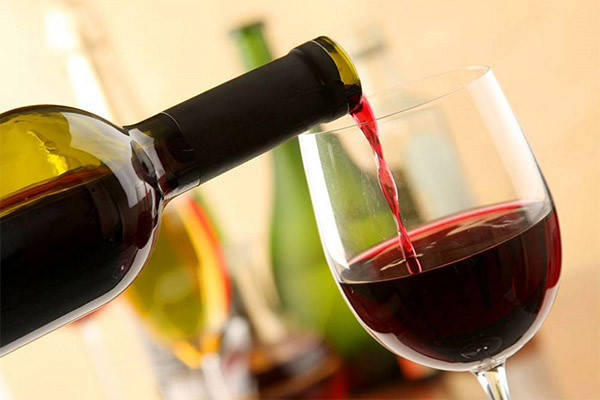
Whether you can drink it every day
There is no consensus among doctors as to whether it is okay to drink red wine every day. Although there are a number of studies suggesting that daily consumption of this drink may even be beneficial.
Most likely, in this case, you should take into account medical standards related to the ethanol content of this drink (16 g per 150 ml). In this regard, it is recommended that men drink no more than two glasses of wine a day, and women no more than one.
Can you drink on an empty stomach and at night?
It is not recommended to drink wine on an empty stomach, so that the substances it contains do not irritate the mucous membrane of the stomach. But the doctors consider a glass of wine at night to be a good idea. And there are a number of reasons for this:
- Red wine contains melatonin - the so-called sleep hormone, which allows the body to relax. It works better than chemical sleeping pills.
- Wine has a calming effect. One glass will help get rid of the stress of the day and anxiety for tomorrow, and at the same time relax the muscles.
- Dry red wine dilates blood vessels, which helps to lower blood pressure. It helps to normalize heartbeat and cope with tachycardia.
But all this concerns only a low-calorie dry wine, a glass of which contains 100-125 kcal. And you should not snack on this drink at night.
Is it possible to drink red wine during the Lent?
Orthodox Christians in this question can adhere to the requirements of the monastic code, according to which in Lent it is allowed to drink only red wine (and it is better to drink cahor) and only on weekends, ie on Saturday and Sunday. Moreover, this applies to all Lenten days of the year, including Lent and Christmas.
However, there is no indication of the exact amount that can be allowed during Lent. But most priests recommend limiting oneself to one glass.
In addition, it should be remembered that the monastic charter was written long ago, on the basis of traditions established in Syria and Byzantium. In these countries, first, they drank wine only when it was highly diluted with water (about 1:3). Secondly, in those conditions, wine made up for the lack of water and minerals and often served as medicine. In modern life the lack of liquids and vitamins can easily be compensated for without wine, so many priests encourage their parishioners to give up alcohol for the duration of Lent.
What to snack on red wine
Red wine is served with a variety of dishes. Much depends on the type of wine itself, its strength and bouquet. For example:
- Cabernet Sauvignon is a quite strong wine, which is why it is not served with light dishes. Basically, it goes well with meat, such as steak and red stew. Young Cabernet Sauvignon is served with pork dishes and Italian pasta. In addition, the aged wine pairs well with desserts based on dark chocolate.
- Shiraz is served with meat dishes and fatty cheeses.
- Merlot is considered a good choice for simple dishes. This wine is considered the perfect accompaniment to meat dishes, sausages, various legumes (for example, it can be served with bean or lentil stews). It pairs well with semi-hard cheeses like Cheddar and Gouda. And it's that rare case where a red wine pairs with fish, but only with salmon or tuna.
The traditional approach here is that the taste and aroma of the wine should not dominate the taste of the dish. That's why red wine with its velvety notes is considered a good accompaniment to meat.
Can white and red wine be mixed?
It is believed that different types of alcohol cannot be mixed. However, in fact, it all depends on the conditions under which this alcohol is consumed. For example, when it comes to tasting, red and white wine should never be mixed, otherwise no flavor and aroma shades can be distinguished. But if we are talking about a feast with a change of dishes, a glass of white wine may well be replaced by a glass of red.
Many people think that such mixing will only aggravate a hangover. But that's not really the case. Indeed, red wine contains more tannins, and after its consumption the hangover will be more pronounced than if a person drank only white wine. But if we are talking about a very small amount of alcoholic beverages, this difference will practically not be felt.
How to get out a red wine stain
There are several ways to remove such a stain. If it is very fresh, you need to pour hot water, acidified with table vinegar or citric acid, until it disappears completely.
Another popular way to remove a stain is to lightly moisten the piece of fabric and sprinkle it with fine salt, rubbing it lightly into the fibers of the fabric. The salt gruel will absorb the pigment, and it can be removed with a damp cloth. And then the thing is washed in the usual way in a machine or by hand.
How to make mulled wine with red wine
Mulled wine based on red wine is a classic version of this drink. To prepare it you will need 750 ml of red wine, 100-150 g of sugar (brown is better, but white will do), 1 cinnamon stick (1 tsp. powder of this spice), 1/4 tsp. grated nutmeg, 10 cloves and 1 medium orange. Lemon, apple, honey or ginger are ingredients that are not mandatory and are added to taste.
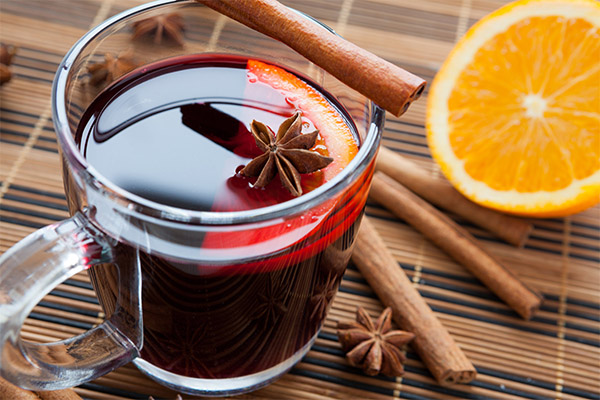
The cooking process proceeds as follows:
- Wine is poured into a metal pot and heated over low heat.
- An orange, cut into circles, is added. You can chop half an orange and squeeze the juice from the other half.
- Add sugar and prepared spices (including grated ginger), mix thoroughly, watching how the sugar dissolves. If you plan to add honey, the amount of sugar is reduced. Some experts believe that it is better to add spices gradually, especially if you are not sure that this amount will please the family.
- When the sugar is completely melted, the pot with the mulled wine is covered with a lid and left on low heat for about 10 minutes.
After this, the drink is poured into mugs or special glasses with thick glass walls. If apples are used for the mulled wine, they are not boiled with the wine, but diced and placed at the bottom of the glasses. Then they soak up the wine and spices, but at the same time they retain their freshness and remain crisp.
Popular red wines
The most popular red wine variety is Cabernet Sauvignon. It comes from France, the wine-producing province of Bordeaux. The history of the drink goes back more than three centuries. However, nowadays it is also produced in Australia, Italy, Canada, the United States, Chile and other wine regions. It is based on the Cabernet Sauvignon grape variety.
However, there are so-called blended wines, which are made from a mixture of several varieties. For example, it could be Cabernet Blanc and Cabernet Franc grapes. Such wines are aged for 10-15 years, during which time they acquire aromas of oak bark and coffee, chocolate or tobacco notes. Cabernet 3-7 years old is considered a young wine. It has a lighter, fruitier flavor with plum, cranberry and raspberry notes.
Another popular red wine variety is Merlot. The homeland of this wine is also considered to be France, although it is possible to find American, Chilean or Italian counterparts and at the same time of excellent quality. It is a lighter wine compared to Cabernet Sauvignon, its taste is considered to be less tart and full-bodied.
Shiraz, made from dark sirah grapes, is a popular wine. It is a more modern wine, relatively new compared to the above two varieties. Nevertheless Shiraz is a very aromatic and strong wine that should not be mixed with anything else.
Today Shiraz is produced not only in France but also in Australia where it is particularly popular. There are certain standards for this variety, but this wine, like no other, is influenced by the state of the soil on which the grapes grew, climatic conditions and fermentation features. So producers can have fundamentally different wine flavors.
Another popular variety of red wine is cahor. And it comes in two varieties. French kagor is a dry red wine. And that cahor, which is produced in the post-Soviet space, is a drink made from a variety of grapes, which has a fairly high sugar and alcohol content and often has a sweet chocolate flavor.
Interesting facts about red wine
Red wine is a drink known since ancient times. And all this time winemakers are improving the technology of its production, and scientists are studying its properties. Interesting facts about red wine are worth knowing for everyone who appreciates this drink:
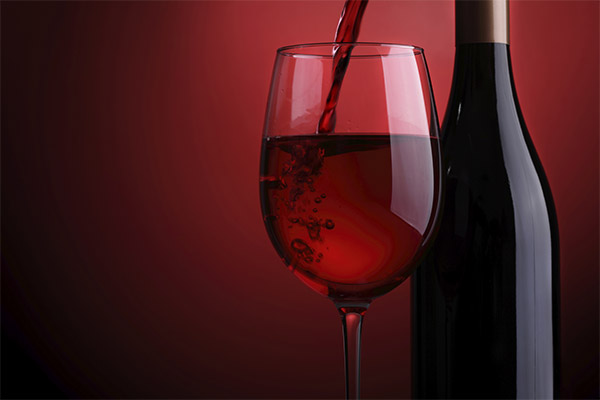
- Red wine has a beneficial effect on the body. As a medicine, it was used in ancient Egypt and ancient Greece. Hippocrates believed that red wine was an excellent diuretic and antiseptic, and modern research has proved him right.
- The oldest bottle of this drink dates back to 325 AD. It was found near the German town of Speyer. It can now be seen in the Historical Museum of the Palatinate.
- In ancient Rome it was forbidden for women to drink red wine. Initially, the husband even had the right to kill his wife who violated this prohibition. Fortunately, the law was later relaxed, and the offender faced a divorce rather than the death penalty. It is believed that the kiss was invented in ancient Rome to test whether or not a woman had been drinking wine.
- Fermentation of red wine takes from 3 months to 5 years. White wine does not go through the fermentation process.
«Important: All information on this site is provided for informational purposes only purposes. Consult a wine specialist before applying any recommendations. specialist. Neither the editors nor the authors are liable for any possible harm caused by materials."


